Family trusts and self-managed super funds (SMSFs) have a lot to offer Australians as wealth transfer and management tools.
Family trusts and SMSFs carry their own benefits and disadvantages in providing a way to transfer and manage your family’s wealth. By weighing up the points of difference, you can choose the most appropriate option for you.
One of the major benefits of using a SMSF is the opportunity to minimise your tax bill. Investment income is taxed at 15 per cent cap during the accumulation phase; during the pension phase, there is no investment property tax. While family trusts do not share all the same tax benefits, they are simpler to manage as they adhere to fewer regulations and are not audited.
A family trust will also offer greater flexibility in managing your investment portfolio, i.e., holding assets used for personal use such as a holiday house, while SMSFs provide flexibility in managing your retirement nest egg.
You cannot access your SMSF until you retire or meet a condition of release, so if you are in the early stages of wealth accumulation, a family trust may be better suited to your needs. When used correctly, a family trust can be an effective way to add to your super.
They allow higher-earning family members to distribute income to lower-earning family members to even out the tax burden among the family and protect assets for current and future generations.
A family trust also offers a better avenue for inter-generational wealth transfer than a SMSF.
Unlike a SMSF, in a family trust, the trustee does not own the assets; the trust does. So when the trustee passes away, the assets remain in the trust. This helps to protect assets from falling into the wrong hands when the trustee dies.
However, a SMSF also allows super proceeds to be excluded from an estate where there is an effective death binding nomination. In this way, you can nominate who you would like your death benefits to be paid to.
If you find the benefits of both options appealing, it is important to note that operating family trusts and SMSFs at the same time is an effective option for many individuals. For example, an individual may make payments to their SMSF (reaping the tax rewards available), until they reach their contribution caps. At this point, they can choose to send their remaining funds to their family trust. In this way, you may have greater flexibility in managing your retirement savings while creating an easier way to manage and pass on your assets to your family’s future generations.
At Walshs we are accredited to provide advice to self-managed super funds. We will work with you to determine your financial retirement goals, then provide strategic advice to get you there. Read more from us about self-managed super funds here.
If you have any questions about family trusts and SMSFs make an appointment to see the Walshs team – you can now book online here – or call Walshs on 07-3221 5677.
As this advice is general in nature please do not hesitate to contact one of our adviser accountants or financial planning advisers if you have a query that is specific to your circumstances.











